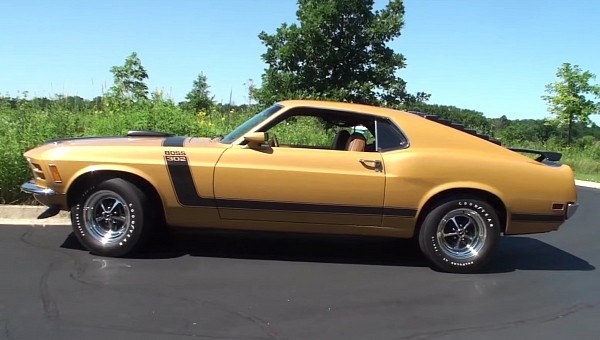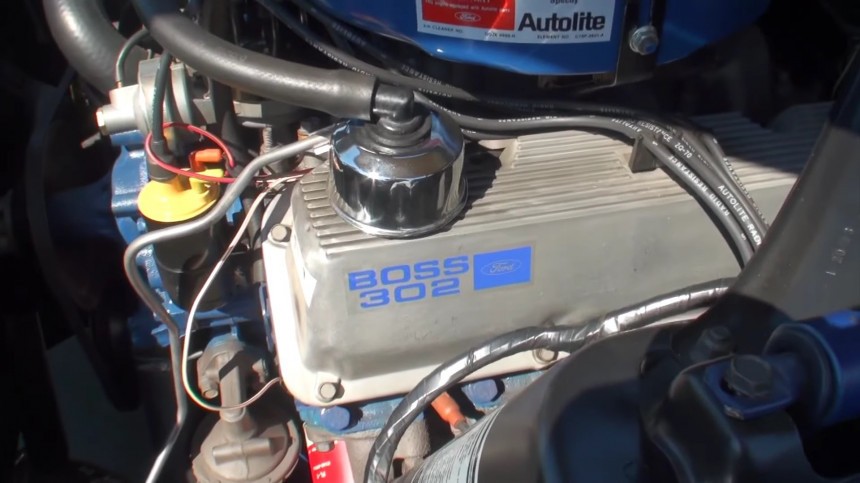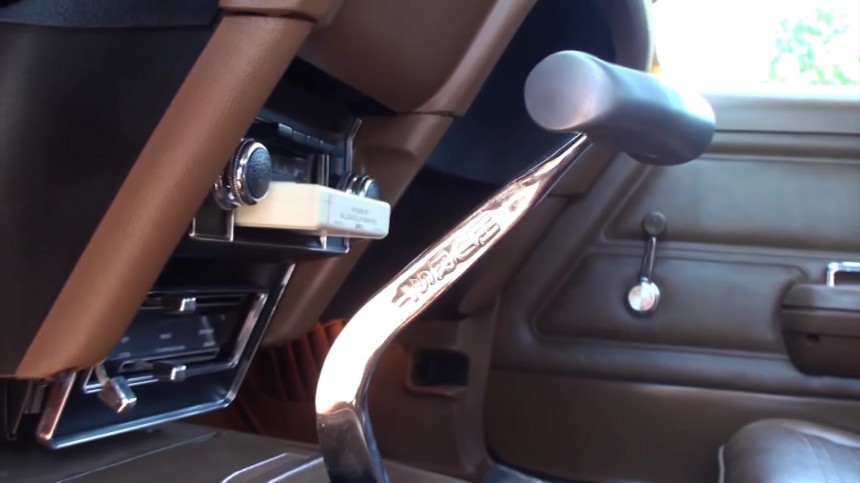First time on video under current ownership (since the last year of the previous millennium), this Ford Mustang BOSS 302 is one magnificent example of what a classic car deserves from life. The current owner bought it in June of 2000 and has put in a two-year restoration project immediately following the purchase. Twenty years after his work was done, the gold Mustang came in front of the camera for the first time.
And what a sight it is, as you can see for yourselves, courtesy of Lou Costabile, the YouTuber with a keen eye for classy classics. The BOSS is no less majestic than when it left the Dearborn factory in April 1970. Ford themselves took great pride in their thoroughbred. The “Buyer’s Guide of new car facts for 1970” (found in the trunk of this genuinely stunning Ford, along with several other documents) describes the automobile in very high terms.
“BOSS 302... when you like it quick. This one goes like the wild wind. All-out performance for adventurous souls who want to rule the road. A high-output Boss 302 4V V-8 winds up 290 ferocious horses. It has belted wide-oval tires, hub cap/trim ring, a front spoiler, and a space-saver spare tire. Available are hot extras like the “shaker” hood scoop, adjustable rear deck spoiler and Sports Slats (shown above), and the close-ratio 4-speed with Hurst Shifter. Like all Mustangs, Boss is available in wild colors, too. And there’s plenty more.”
Not much to follow with about a BOSS after that introduction. However, the Marty report on this particular Mustang from nearby Chicago details its specialty. To start with, 1970 was the closing year for the original BOSS 302 (there was a second generation in 2012-13), and 7,014 Mustangs had the four-barrel 302 CID (5.0 liter) V8 out of the total 191,000 made for that model year. Only 47 of those cars had the four-speed wide-ratio transmission.
This Bright Gold Metallic over Ginger Mustang came equipped with a factory tachometer to narrow it down even further. It made keeping the revs in check more manageable, as the wide-ratio gearbox tended to be uneven, especially between the third and fourth. RPM would drop, pulling down the power curve, and the BOSS wasn’t built for such mishaps.
The 3.50 Traction-Lok rear and AM/8-Track Stereo combo make this BOSS 302 here one-of-a-kind. There isn’t another like it, with this drivetrain and trim, and the owner couldn’t be happier about that. Having bought a brand-new Ford Mustang BOSS 302 back in 1970 “right off the showroom floor,” as he puts it, the man fell instantly in love with the performance Mustang.
So, it came naturally to buy another BOSS after parting ways with his first one. The restoration job is a masterpiece –listen to the solid lifters purring and dancing along with the hood scoop! The Magnum 500 wheels have covered almost 86,000 miles (138,000 kilometers) since 1970, but the car doesn’t show any signs of slowing down.
Both BOSSes – the 302 and the 429 – came out in 1969 and became legends in 1970. That year, Ford pulled the curtain on these high-performance iterations of the wild pony. While the smaller version was born as a homologation production run for the SCCA Trans-Am racing events, the mighty 429 had the same task but for NASCAR purposes.
The BOSS 302 was a unique engine in several ways, not just mechanical. The high-output small block had thin walls and increased nickel content for more strength and faster cooling. The crankshaft mains had four bolts to withstand the increased forces exerted on them. 6.9 seconds for the zero-to-sixty run (0-97 kph) and 14.6 seconds for the quarter mile at 98 mph (158 kph) required strong muscles, and the 302 V8 delivered. 290 hp and 290 lb-ft of torque was the rated output of the 5.0-liter plant (294 PS / 393 Nm).
Thanks to this strong puncher, the BOSS 302 snatched the Trans-Am trophy in 1970 from the likes of the Camaro, AAR Cuda, Firebird, and Javelin that the competition threw onto the racetrack. The fast Mustangs could have claimed the laurels since their maiden racing year had it not been for slow pitstops and tire trouble. After 1970, Ford didn’t develop the BOSS variants further, leaving us with a few highly coveted machines like the one you see in the video below.
“BOSS 302... when you like it quick. This one goes like the wild wind. All-out performance for adventurous souls who want to rule the road. A high-output Boss 302 4V V-8 winds up 290 ferocious horses. It has belted wide-oval tires, hub cap/trim ring, a front spoiler, and a space-saver spare tire. Available are hot extras like the “shaker” hood scoop, adjustable rear deck spoiler and Sports Slats (shown above), and the close-ratio 4-speed with Hurst Shifter. Like all Mustangs, Boss is available in wild colors, too. And there’s plenty more.”
Not much to follow with about a BOSS after that introduction. However, the Marty report on this particular Mustang from nearby Chicago details its specialty. To start with, 1970 was the closing year for the original BOSS 302 (there was a second generation in 2012-13), and 7,014 Mustangs had the four-barrel 302 CID (5.0 liter) V8 out of the total 191,000 made for that model year. Only 47 of those cars had the four-speed wide-ratio transmission.
This Bright Gold Metallic over Ginger Mustang came equipped with a factory tachometer to narrow it down even further. It made keeping the revs in check more manageable, as the wide-ratio gearbox tended to be uneven, especially between the third and fourth. RPM would drop, pulling down the power curve, and the BOSS wasn’t built for such mishaps.
So, it came naturally to buy another BOSS after parting ways with his first one. The restoration job is a masterpiece –listen to the solid lifters purring and dancing along with the hood scoop! The Magnum 500 wheels have covered almost 86,000 miles (138,000 kilometers) since 1970, but the car doesn’t show any signs of slowing down.
Both BOSSes – the 302 and the 429 – came out in 1969 and became legends in 1970. That year, Ford pulled the curtain on these high-performance iterations of the wild pony. While the smaller version was born as a homologation production run for the SCCA Trans-Am racing events, the mighty 429 had the same task but for NASCAR purposes.
The BOSS 302 was a unique engine in several ways, not just mechanical. The high-output small block had thin walls and increased nickel content for more strength and faster cooling. The crankshaft mains had four bolts to withstand the increased forces exerted on them. 6.9 seconds for the zero-to-sixty run (0-97 kph) and 14.6 seconds for the quarter mile at 98 mph (158 kph) required strong muscles, and the 302 V8 delivered. 290 hp and 290 lb-ft of torque was the rated output of the 5.0-liter plant (294 PS / 393 Nm).
































